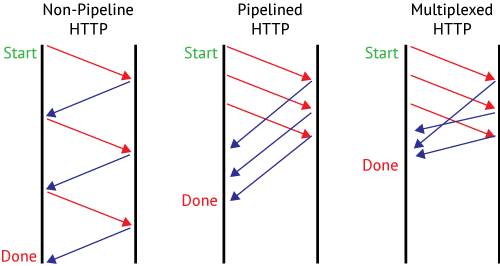
LoadMaster - HTTP/2
HTTP/2 offers a better end-user experience for web applications and services with optimizations such as compression and request multiplexing.
HTTP/2 is an IETF (Internet Engineering Task Force) standard (rfc7540) which updates the existing HTTP 1.1 networking standard to deliver much better performance through header compression, request multiplexing and server push of content. These optimizations can provide significant improvements on page load times, especially for pages that contain many elements such as stylesheets and images. By supporting load balancing of HTTP/2 clients, LoadMaster delivers the performance gains of HTTP/2 without having to upgrade the application platforms from HTTP 1.1.
HTTP/2 Multiplexing and Pipelining
In the very early days of the web, web clients (browsers) would open a TCP/IP connections to the web server for each element in a web page. This became quite inefficient as web pages became more complex and included multiple images, css files and scriptsand the overhead of opening all these connections was significant. With http 1.1 the capability to pipeline multiple request via a single TCP/IP connection was introduced. This reduced the number of TCP/IP connections that needed to be established and led to a significant improvement in performance. However, the replies to requests would always arrive back in the order sent so that if one request was slow, all other requests on the connection were blocked.
 HTTP Pipelining and Multiplexing compared
HTTP Pipelining and Multiplexing compared
LoadMaster and HTTP/2
LoadMaster provides a HTTP/2 to HTTP 1.1 proxy that delivers the benefits of HTTP/2 even where the web servers are still running HTTP 1.1. This allows services on non-HTTP/2 platforms to be delivered to clients as optimized HTTP/2 services removing the pressures to migrate to HTTP/2 hosting platforms. When load balancing HTTP/2, LoadMaster enforces the correct TLS cipher suites and also performs header compression.
